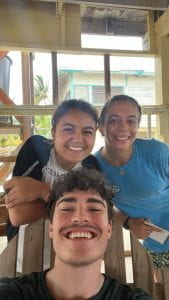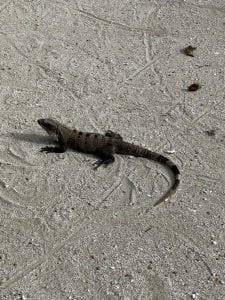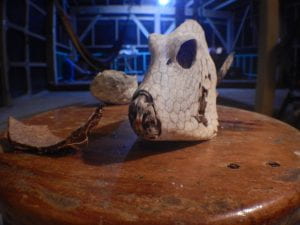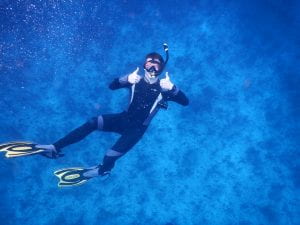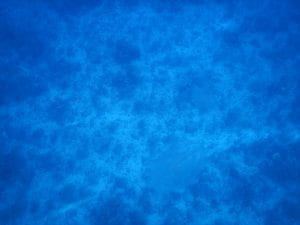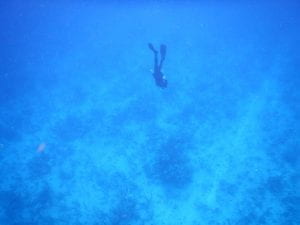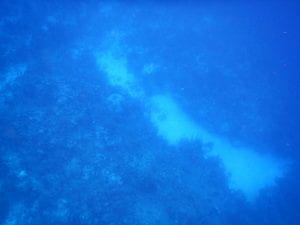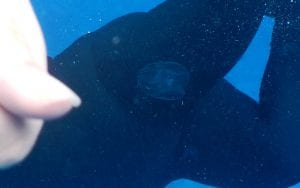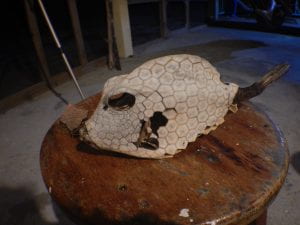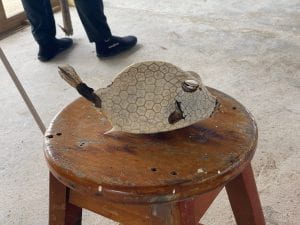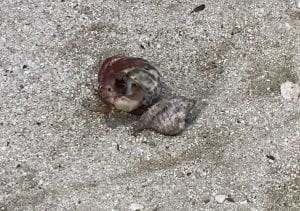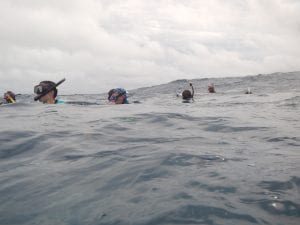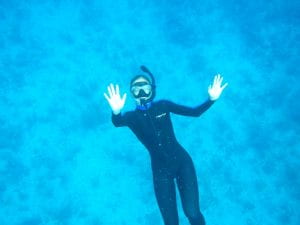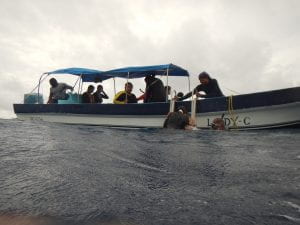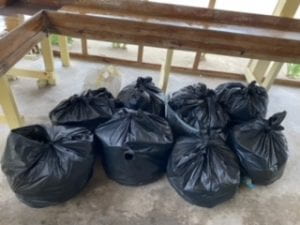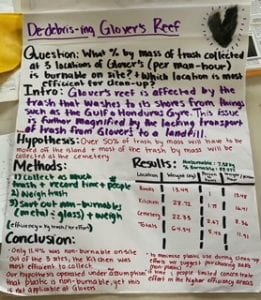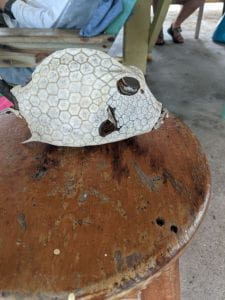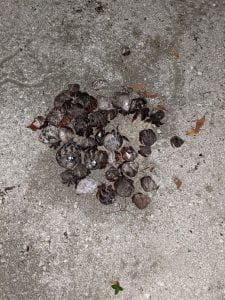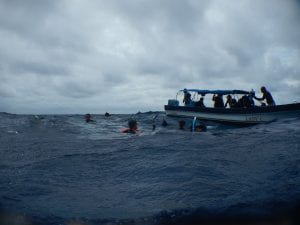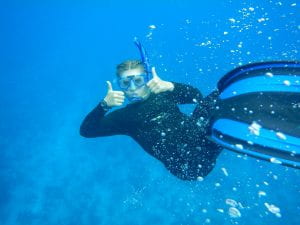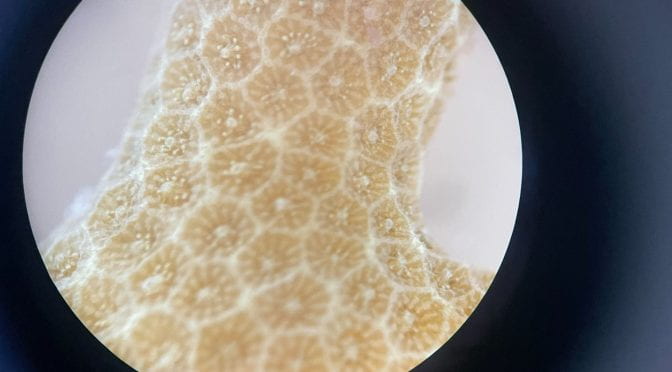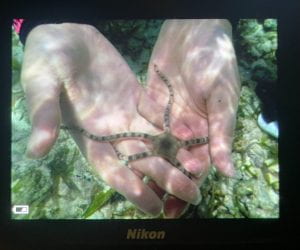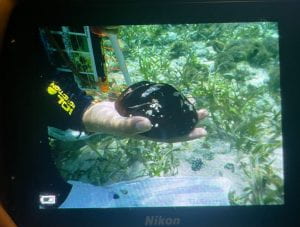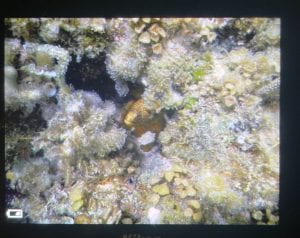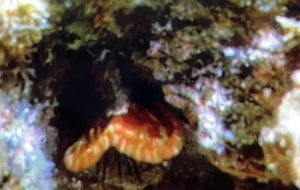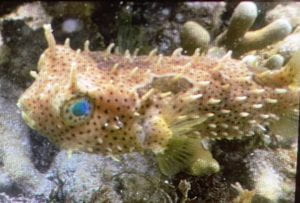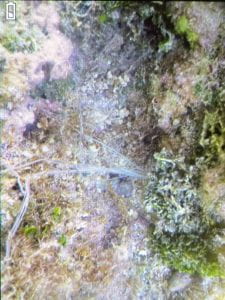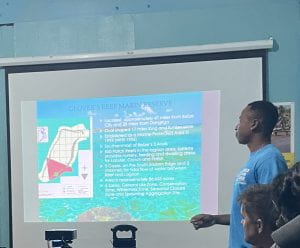Hey y’all! It’s Michiel again : )
I woke up this morning after nearly freezing to death last night. It wasn’t actually cold (I mean, how cold could it get in the tropics?), but my bed is right by the window and the wind kept blowing into my sheet, and I couldn’t figure out how to close the window, so that was fun. It wasn’t that bad, though, I’m definitely being dramatic. After waking up, I met everyone for breakfast, and they make the most amazing pancakes here; I was so happy when I saw them waiting for us.
After breakfast, we went to the forereef. The waves were pretty strong today, so I started getting a headache on the boat and it kept getting worse as I was in the water, but it was definitely worth it because the area of the reef we saw was so amazing. We saw spur and groove formation, a swarm of ctenophores, and a sea turtle lying in the sand! This area was also way deeper than any area we had been to before (about 70 feet) and there was a reef drop right next to it which dropped for hundreds of feet, so we really got to test our breath-holding abilities. One of the experienced divers actually went down about 100 feet! While we were there, we saw a school of fish, but I could not get close enough to figure out what they were. They were mostly blue and larger than a damselfish or a surgeonfish, so they may have been a parrotfish, but they may have also been something entirely different. Parrotfish and other types of herbivorous fish are known to travel in schools, so it isn’t unruly to guess that these may have been parrotfish, but, again, they were so deep that I couldn’t get a very good look. It may not have been an herbivorous fish at all. If it wasn’t, then I didn’t get to see any herbivorous fish today because we were too far from the reef to see that many.
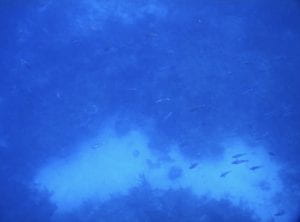
After leaving the forereef, we had a little break, then watched some lectures and had lunch. After lunch, we started coming up with a research question that would involve a beach clean-up. We ended up with “What percent, by mass, of the trash on Middle Caye needs to be disposed of off island? What area is the most efficient for collecting trash?” We hypothesized that over 50% of the trash would need to be moved off island for disposal and that the coral graveyard would be the most efficient area for trash pick-up. To collect data, Ava, Michael, Maggy, Adrian, and I went out to the bunks to collect trash for a total time (between all people) of one hour. Different groups did this at different locations around the island. Back at the wet lab, we weighed everyone’s trash bags, separated burnable trash from non-burnable trash, and weighed the non-burnable trash. With our data, we discovered that only 11.43% of the trash here needs to be removed from the island because they actually burn the plastic here, so they only remove the metal and glass. We also found out that the most efficient area for trash pick-up was the area behind the kitchen because the people there collected 16.41 kg of trash per person-hour. We believe that the reason the most efficient area wasn’t the coral graveyard was because the coral graveyard’s trash was more spread-out and it was much smaller, so it didn’t contribute as much in terms of mass. Hopefully this data can be helpful to the Belize Fisheries Department because they have plans to do more beach clean-ups on Middle Caye!
After presenting our project to our professors, we had another lecture then dinner. Right before dinner, though, Nate set a shell down in front of a hermit crab, and we saw it change from it’s previous shell to that one! It was so gross. Anyway, we stayed in the dining room until it closed because we were all talking, and then Ruth (a marine safety officer) joined us and told us about the clothes she makes and the history of Belize. She taught us a lot, and she’s been a super important part of our stay here on the reef, so we couldn’t be more thankful to have her.
After dinner, we were going to go on a night snorkel, but the weather picked up and we decided that it wouldn’t be safe to go. The group just ended up working on our blogs and field notebooks before going to bed.
Overall, today was a great day! Here’s a group picture of us washing our hands after we finished handling all the trash, a picture of Sophia, Elena, and I as we were working on our poster for our trash presentation, and a picture of an iguana.
